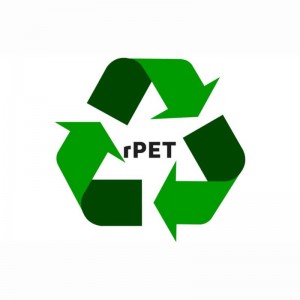(3-minute read)
In a world drowning in single-use plastics, innovative solutions are emerging to tackle the crisis—and RPET tote bags are leading the charge. Made from Recycled Polyethylene Terephthalate (RPET), these bags transform discarded plastic bottles into durable, eco-conscious accessories. But how exactly do they work, and why are they a game-changer for sustainability? Let’s dive in.
What Is RPET?
RPET stands for recycled polyethylene terephthalate, a material derived from post-consumer plastic waste, such as water and soda bottles. Instead of ending up in landfills or oceans, these plastics are cleaned, shredded into flakes, melted into pellets, and spun into fibers to create sturdy, reusable fabric. This process reduces reliance on virgin plastics (made from fossil fuels) and gives trash a second life.
How RPET Tote Bags Are Made
Collection: Discarded plastic bottles are gathered from recycling programs or ocean cleanup initiatives.
Processing: Bottles are sterilized, stripped of labels, and crushed into tiny flakes.
Transformation: Flakes are melted and extruded into threads, which are woven into fabric.
Design: The RPET fabric is cut, sewn, and printed (with eco-friendly inks) into stylish tote bags.
Fun fact: One medium-sized RPET tote repurposes 5–10 plastic bottles, depending on its size!
Why Choose RPET Tote Bags?
Waste Reduction:
Over 1 million plastic bottles are sold every minute globally, and most aren’t recycled. RPET bags help divert this waste.
Lower Carbon Footprint:
Producing RPET uses 50–60% less energy than virgin PET and reduces greenhouse gas emissions.
Durability:
RPET fabric is strong, water-resistant, and long-lasting, making these bags ideal for groceries, shopping, or daily use.
Circular Economy:
RPET supports a “closed-loop” system, where materials are reused rather than discarded.
Challenges to Consider
While RPET bags are a step forward, they’re not a perfect solution:
Recycling Limits: RPET can only be recycled a finite number of times before quality degrades.
Microplastics: Washing synthetic fabrics (including RPET) releases microplastics into waterways. Opt for spot-cleaning or use a microfiber filter.
Greenwashing Risks: Some brands falsely market bags as “eco-friendly” without proper recycling practices. Look for certifications like Global Recycled Standard (GRS).
Maximizing Your RPET Bag’s Impact
Reuse Relentlessly: The more you use it, the more you offset its environmental footprint.
Recycle Responsibly: When the bag wears out, return it to a textile recycling program (if available).
Pair with Mindful Habits: Combine your RPET tote with other sustainable choices, like buying in bulk or avoiding single-use packaging.
The Bigger Picture
RPET tote bags symbolize a shift toward creative circular solutions in fashion and design. While they’re not a cure-all for plastic pollution, they prove that innovation can turn waste into value. By choosing RPET, consumers vote for a system that prioritizes reuse, recycling, and responsibility—one bag at a time.
Final Thought: Next time you grab a tote, make it RPET. It’s not just a bag; it’s a statement that today’s trash can be tomorrow’s treasure.
Post time: Mar-03-2025

